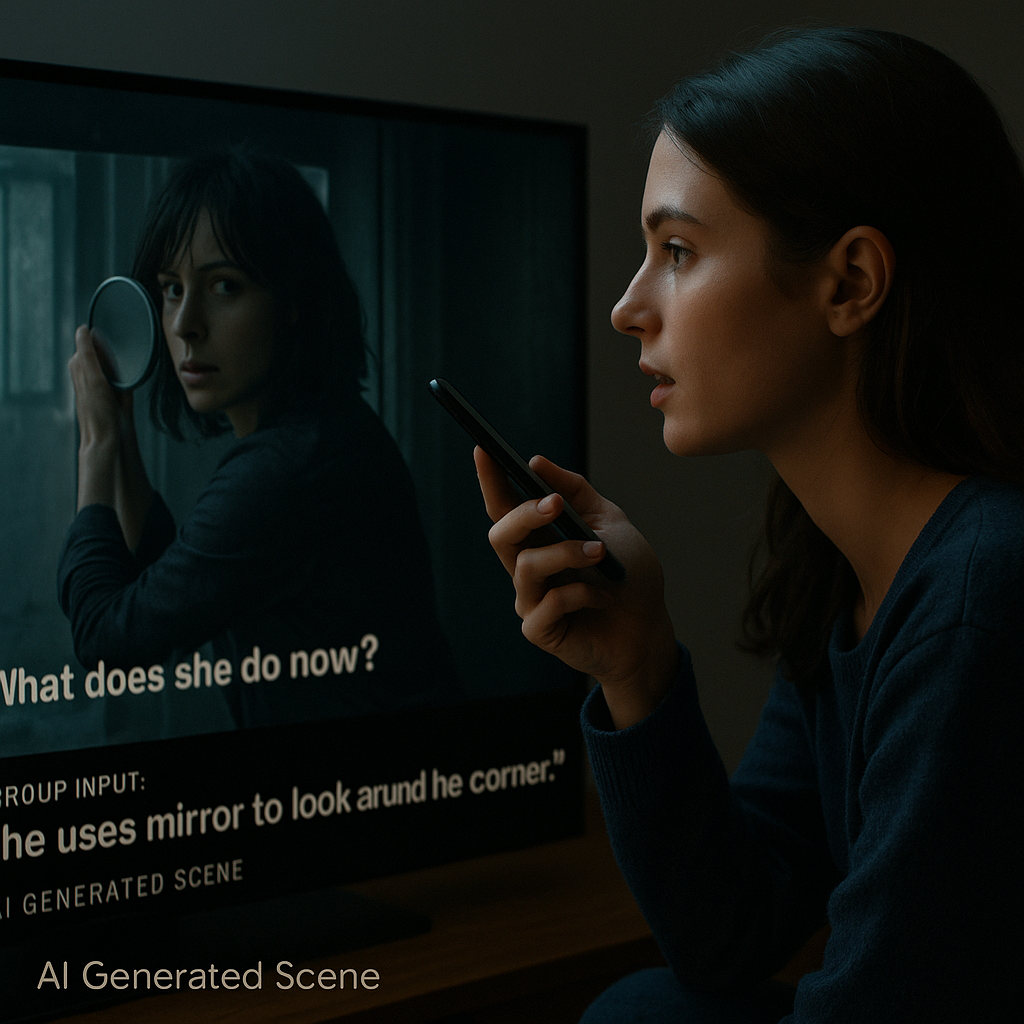
Introduction:
Start with a familiar scene. We all know movie night: sitting on the couch with friends or family, a big bowl of popcorn, scrolling through Netflix or Disney+ in search of the perfect film. We’ve become experts at passively consuming stories. But what if that passive role changed? What if we didn’t just watch, but actually took part? Thanks to rapid developments in artificial intelligence (AI) and real-time video generation, we’re on the brink of an entertainment revolution — a future where the line between viewer and creator begins to blur.
The Concept: Interactive & Collaborative Entertainment
Imagine this: you start a new thriller with a group of friends. The movie begins with a fixed plot, stunning cinematography, and compelling characters, crafted by talented filmmakers. But at a critical moment, the group is presented with a choice. Not just a simple A/B decision like in earlier interactive experiments (think Black Mirror: Bandersnatch), but an open-ended question.
Via an app on your phone—or even through voice commands—the group can “prompt”:
- Scenario: The main character is trapped in a dark warehouse. The viewers receive the prompt: “What does she do now?”
- Group input: Someone says, “She uses the mirror in her bag to look around the corner!” Another adds, “And she whistles a tune to distract the pursuer.”
- The AI Director: An advanced AI, acting as a digital director, instantly processes this input. Within seconds, the AI generates a unique new scene in which the main character does exactly that. The visuals, audio, and actions—all are created in real time, fully in the style and tone of the original film.
The Technology Behind the Magic
This may sound like science fiction, but the building blocks are already being laid today. Technologies like OpenAI’s Sora , Veo3 and other generative video models are proving that AI is becoming increasingly capable of producing coherent, high-quality video based on text prompts.
The next step is a model that doesn’t just generate isolated clips, but can maintain a continuous narrative. This AI needs to:
- Understand context: Remember the full plot up to that point.
- Maintain narrative coherence: Ensure that viewer input fits within the logic and tone of the story. A humorous twist in a serious thriller, for example, must be carefully integrated.
- Render in real time: Instantly generate and seamlessly insert the new scenes.
The role of the human filmmaker shifts from “storyteller” to “world-builder.” They create the universe, the characters, the visual style, and the narrative “rules,” within which the AI and viewers co-create their unique story experience.
What Makes This the Future of Entertainment?
- Infinite rewatch value: No movie night is ever the same. The same starting film can lead to dozens of entirely different stories and endings, depending on the creativity of the viewers.
- Ultimate immersion: You’re no longer just an observer of the story; you become an integral part of it. Emotional engagement increases exponentially.
- Social experience 2.0: This transforms a passive group activity into an active, creative, and collaborative one. It’s a movie, a game, and a creative brainstorm all in one.
Conclusion: A New Canvas for Creativity
While we still need to overcome some technological hurdles, the direction is clear. The merging of film and AI will create a completely new form of interactive entertainment—one that takes the promise of “immersive storytelling” to an entirely new level.
At Playanote, where technology and creativity converge, we’re closely following these developments. We believe AI is not a replacement for the human artist, but an incredibly powerful new tool. A tool that enables us to create and experience stories in ways we never thought possible.
The question is no longer just: “What are we watching tonight?” but: “What story are we going to create together tonight?”
July 5, 2025 playanote

